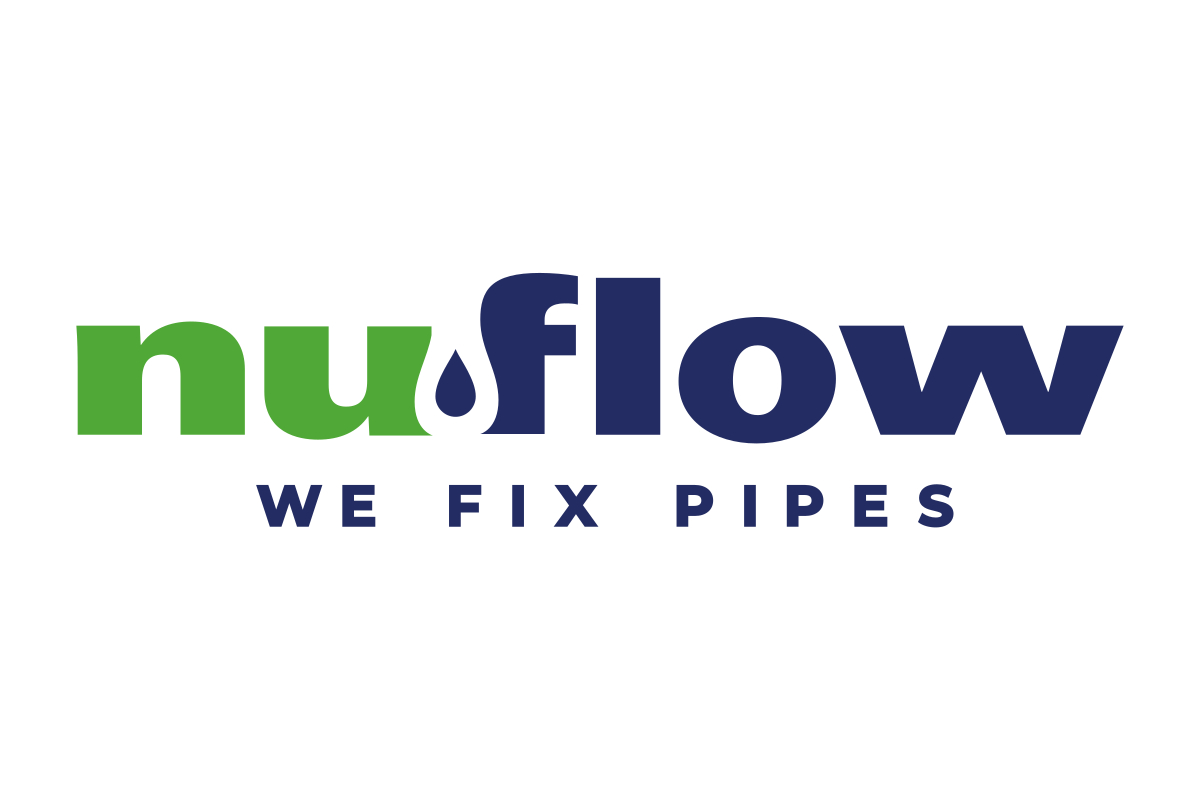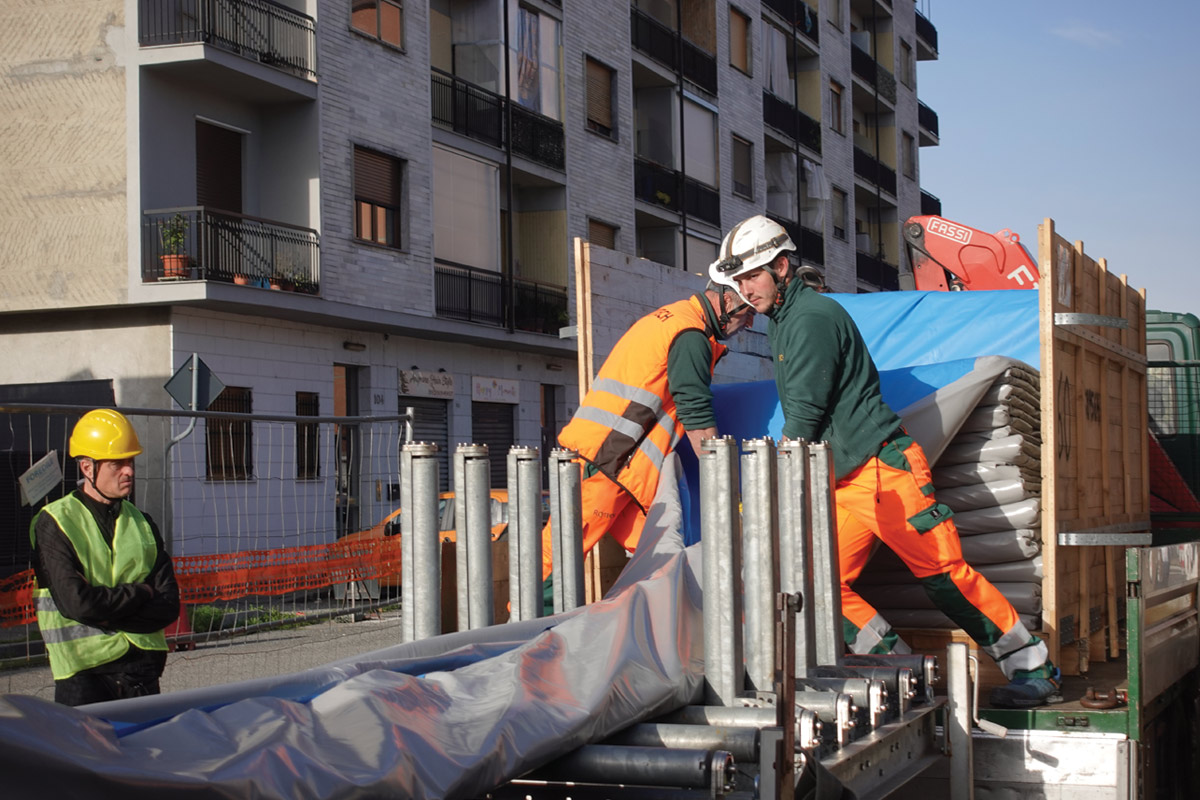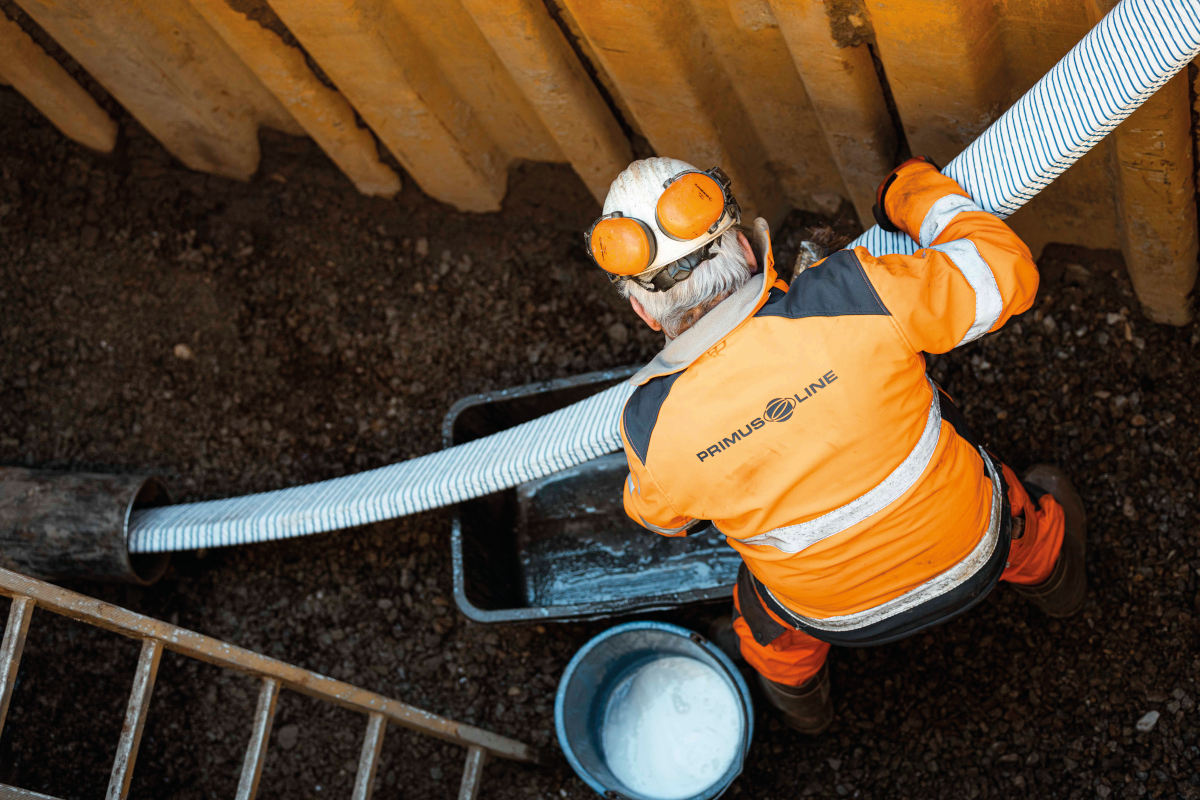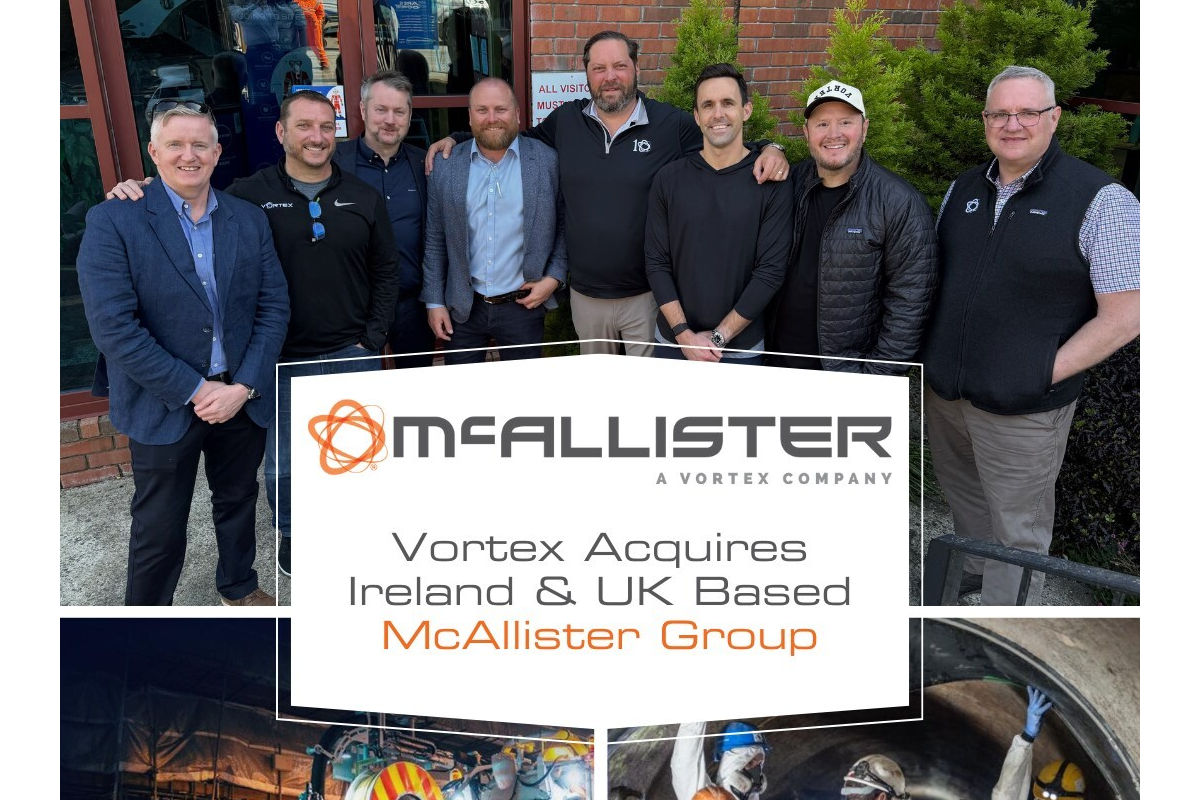Nashville, Tenn.: I/I Removal Relies in Trenchless Rehabilitation
November 12, 2007
 A first-time visitor to Nashville, Tenn., (or even longtime residents) would be surprised to learn about the city’s “underground history.” An 1800s map posted on the wall of President Andrew Jackson’s nearby home, The Hermitage, reveals that the present city landscape was once cut by ravines and streams that drained to the Cumberland River. Similar to some other large cities, as urbanization proceeded, these streams — which often became open sewers — were covered over and pipes were built to convey the flows.
A first-time visitor to Nashville, Tenn., (or even longtime residents) would be surprised to learn about the city’s “underground history.” An 1800s map posted on the wall of President Andrew Jackson’s nearby home, The Hermitage, reveals that the present city landscape was once cut by ravines and streams that drained to the Cumberland River. Similar to some other large cities, as urbanization proceeded, these streams — which often became open sewers — were covered over and pipes were built to convey the flows.Today’s Nashville is a modern, progressive city — working to bring its sewer infrastructure into the 21st century. Since 1990, Metro Water and Sewer (MWS) has operated under a commissioner’s order from the Tennessee Department of Environment and Conservation (TDEC). That order focused on elimination of sanitary sewer overflow (SSO) locations and corrective actions for the 32 combined sewer overflow (CSO) locations.
This led to the establishment of an Overflow Abatement Program (OAP) to comprehensively address overflows, treatment plant expansion and improvements, environmental monitoring, pumping stations, equalization, sewer inspection and flow monitoring. Management of the OAP was conducted by CTE-AECOM Engineers (Nashville) through 2006; 36 other firms were involved in the program for design, inspection, monitoring, etc. The tasks of televideo and smoke inspection were conducted by MWS personnel.
SSO Reduction
A key component of the OAP is sewer rehabilitation, primarily by trenchless methods. To date, 324 miles of the separate sewer system (or 12 percent) have been rehabilitated, resulting in a reduction of SSO locations from 164 to 27. Additionally, by 2006, the number of SSO events was reduced by 72 percent from 465 events at the beginning of the program. The SSO volume reduction of 95 percent (from 1.343 million gallons in 1990) has been even more dramatic. Incomplete summaries from 2007 are not included due to the skewed effect of the extreme drought conditions this year.
From its inception, there were questions about the cost-effectiveness of sewer rehabilitation and its effectiveness for infiltration-and-inflow (I/I) reduction. As early as 1977 under EPA’s “201” program, the agency was dissatisfied with I/I reduction efforts nationally. Despite this, rehabilitation projects continued to be conducted in the United States, but with lowered expectations.
The traditional approach was re-evaluated during all phases of the OAP in Nashville. This evaluation led to a 10-step procedure that became Nashville’s “System Approach.” A pilot study in the Oak Valley subdivision conducted early in the program (and cited as a Trenchless Technology Project of the Year) demonstrated the value of addressing I/I from service laterals. This led to an OAP policy that required all service laterals connected to renewed pipe segments to be renewed to the property line or easement line, (Bible, 1991) and that all manholes connected to those segments would also be renewed. More than 10,000 laterals have been rehabilitated by trenchless methods or replaced by excavation.
Rehabilitation Product Effectiveness
About 80 percent of the mainline rehabilitation work was conducted using cured-in-place pipe (CIPP) and about 12 percent using fold-and-form (F/F) products from several installers. The remaining 8 percent was conducted using replacement, pipe bursting or conventional sliplining techniques.
The analysts concluded that the level of success of each project was not dependent on the various rehabilitation products. All pipe segments and service laterals that were renewed or replaced were required to be air-tested and were only accepted after they were proven to be tight. Some segments failed the air-test after initial installation. However, any defects were corrected and the segment re-tested until it was proven to be acceptable. Therefore, each product successfully eliminated all of the I/I that previously entered the public reach of the rehabilitated pipe segment (manhole to manhole).
This experience seemed to answer a long-standing question in the minds of municipal operators and practitioners of: “What method is best for I/I reduction?” From the standpoint of I/I control and actual practice and performance within the Nashville OAP, the answer is firmly, “All the methods are equally effective, i.e. 100 percent I/I removal in the segment treated.”
However, the groundwater that was excluded from the treated segment could still migrate through the backfill envelope and enter defects in adjacent reaches of pipe or service lateral connections that had not been renewed. Since most I/I control programs only rehabilitate a portion of any system, then the analysts concluded that the most significant factor governing the degree of success (percent removal of I/I in a complete subsystem), was the appropriate selection (or “targeting”) of line segments for rehabilitation in that system. That targeting must consider the effect of migration by anticipating vulnerable pipe reaches that may not exhibit leakage when initially inspected. This represents the core philosophy underlying the “total system approach.”
OAP designers learned that aggressive targeting was more effective in removing I/I. All work was documented by before-and-after flow monitoring. Those results were analyzed for 27 projects representing 94 miles of sewer rehabilitation (29 percent of all work). Using three different criteria, application of the system approach resulted in cutting I/I in half from these project areas.
On a gross average, 7.25 million gal of I/I has been removed annually per thousand feet of lining.
 Documenting Rehabilitation Effectiveness
Documenting Rehabilitation EffectivenessA major problem in the management of a long-term, I/I reduction program is the documentation of results. I/I reduction is usually required by regulatory agencies or initiated by communities due to public pressure to correct egregious problems with overflows and other measures of declining system efficiency and service. Additionally, the U.S. EPA CMOM program has placed a significant emphasis on documentation of system performance and measurement of capacity.
Two primary measures of success are reduction of overflows and reduction of I/I. Documenting overflow event reduction is fairly straightforward. It’s a binary question: Either the event occurred or it did not.
Additionally, it is important to “normalize” the event data for a particular period to allow for annual and seasonal variation of hydrologic conditions. However, documentation of I/I reduction has been more difficult. Partly, this has resulted from a lack of standard procedures and poor practices employed for monitoring flows in sewers and monitoring rainfall. Essential elements that contributed to objective and technically sound documentation of I/I reduction for the Nashville program were obtaining good data and using standardized procedures for analysis.
High-Quality Flow and Rainfall Data
Sewer flow monitors were used that were accurate and that were equipped with redundant systems for reliability. These monitors also allowed internal and external crosschecks and verification of data. Flow monitoring — particularly flow monitoring in gravity sewers — has often been treated like a “black-box” process. The functions and limitations of the equipment are often not well understood, and interpretation of the data may seem arcane.
It is essential that high-quality monitoring equipment be used that measures both depth and velocity. To achieve these standards, the OAP used ADS Environmental Services equipment tested under the EPA’s ETV (environmental testing and verification) program. The ETV testing verified the capability of equipment to accurately measure both of these parameters and this information provided a sound basis for further analysis. Up to 90 long-term flow monitors were used — supplemented by more than 700 temporary meters. A permanent network of 20 rain gauges was used.
Standardized I/I
Analytical Methods
I/I projections conducted after 1997 in Nashville used a non-proprietary standardized approach for analysis of flow monitoring data for estimating rainfall dependent inflow-and-infiltration (RDI/I) quantities and rates. Analyses conducted before that date did not include the rigorous statistical testing — developed later in the program.
The method was developed jointly between MWS and the OAP staff. The procedures were designed to be objective and thereby have reproducible results. Statistical parameters (r- correlation coefficient and 95 percent confidence intervals) were used as an objective means to express the level of overall confidence in the I/I projections for the design rainfall. (Kurz et al, 2003).
These statistically-based quality control methods were derived from the basic principles published for water quality analyses contained in “Standard Methods for the Examination of Water and Wastewater.” (APHA, 1992) Until recently, no such similar standard procedures, which have comparable acceptance, have been available for analysis of flow monitoring data.
Program Costs & Savings
Program costs for the sewer rehabilitation work — including construction, engineering, flow monitoring, video inspection, sewer laterals and manholes are about $170 million. This means that an average project costs (not just lining) about $100 per lf. When compared to the operations and maintenance cost of transport and treatment (about $1.80/thousand gal in Nashville), then the cost of the rehabilitation work can be accounted for in less than eight years. After that period, the benefits of I/I reduction from sewer rehabilitation begin to pay dividends to the city in terms of reduced flows and better service to its customers.
There is still more work that must be conducted to address all the goals of the original commissioner’s order. However, the City of Nashville and its Water Services Department have achieved significant system improvements, which are well documented, protect the environment and are designed to provide the best long-term savings for its customers.
George E. Kurz, P.E., DEE, is senior technical leader at Barge, Waggoner Sumner & Cannon. Gregory A. Ballard, P.E., is Engineer III with Metro Water Services. Paul A. Stonecipher, P.E., is a senior associate with CTE-AECOM.




